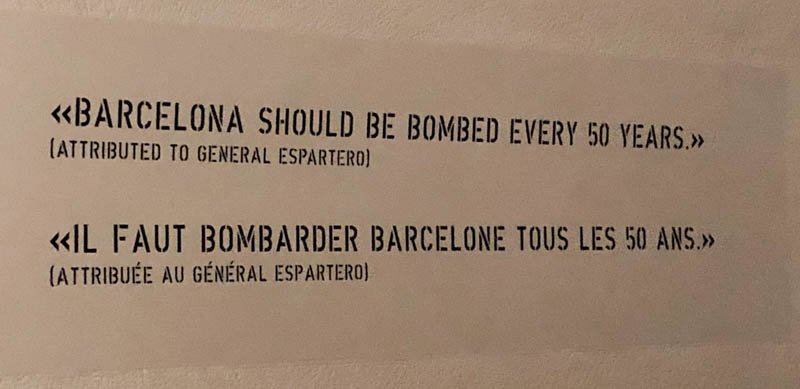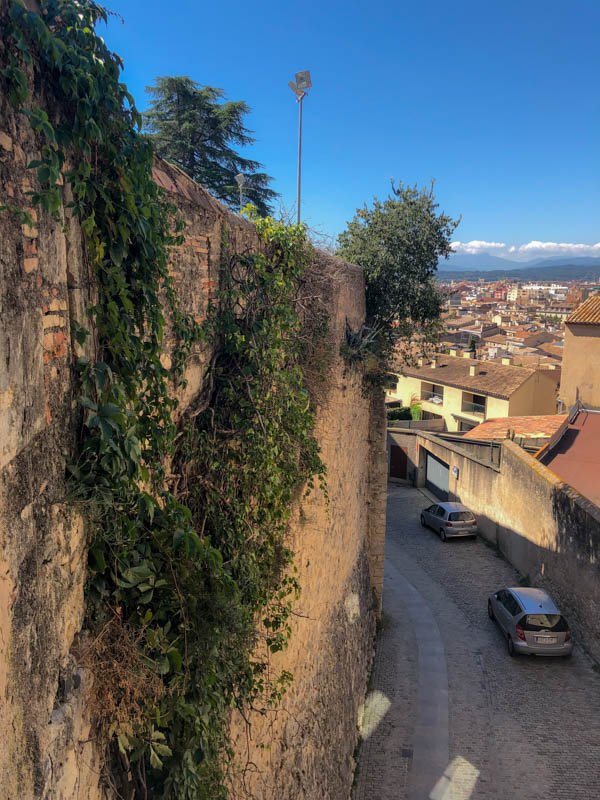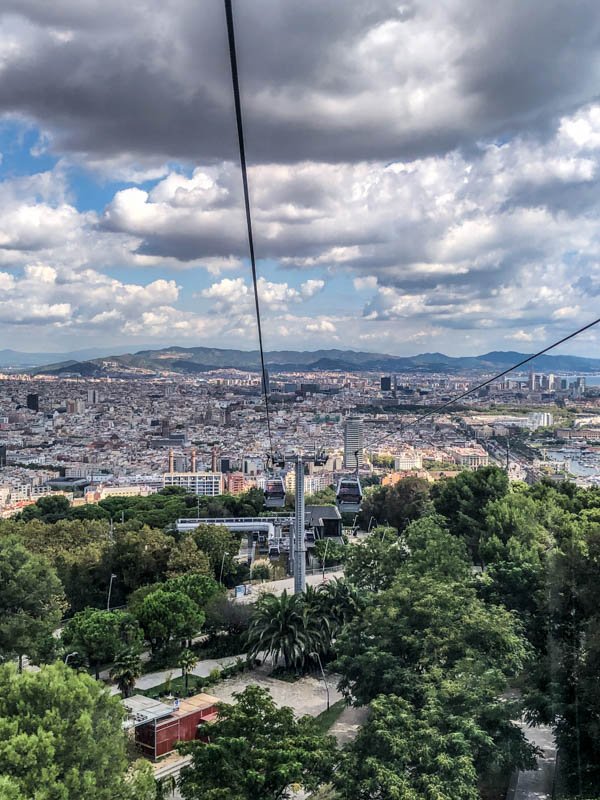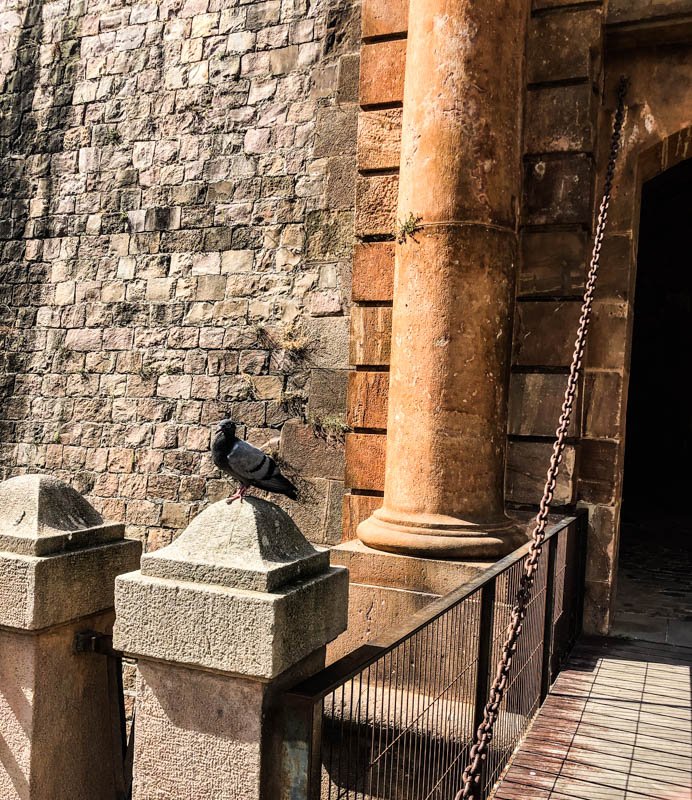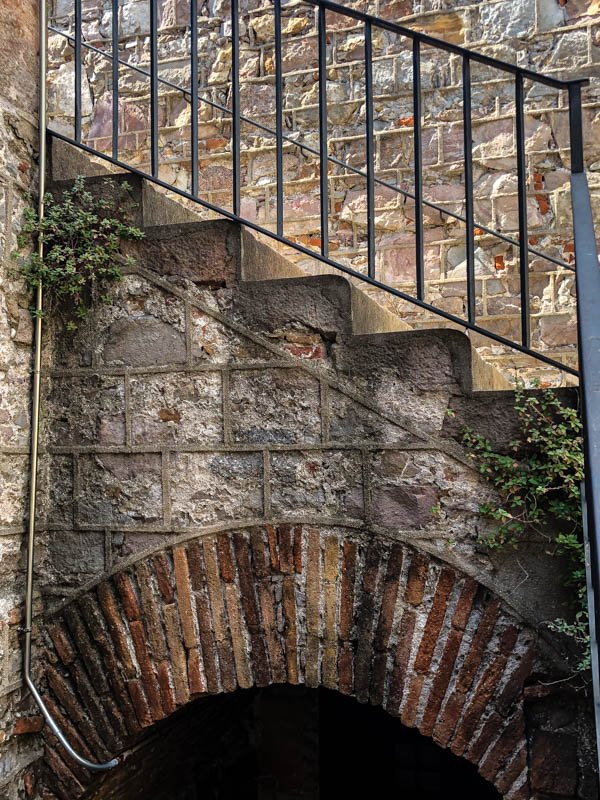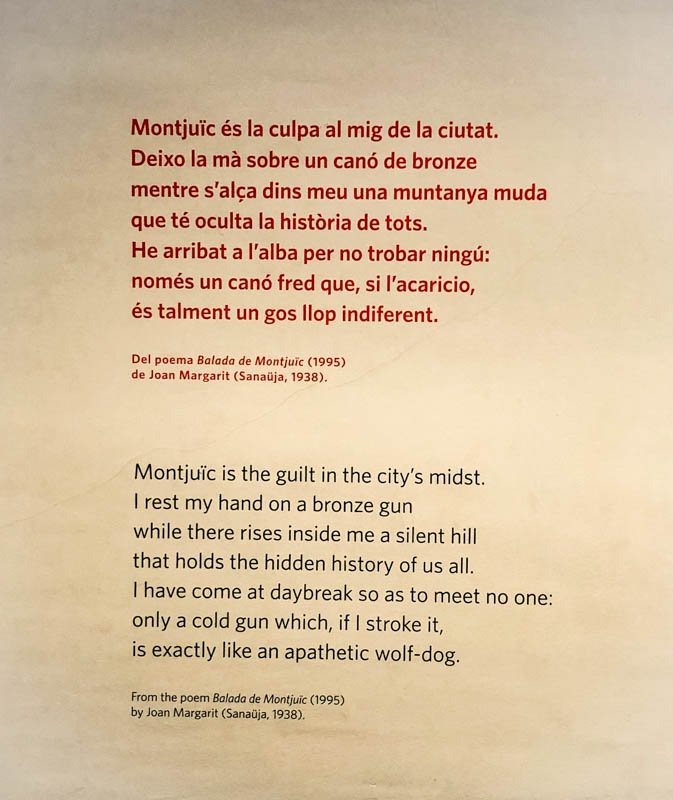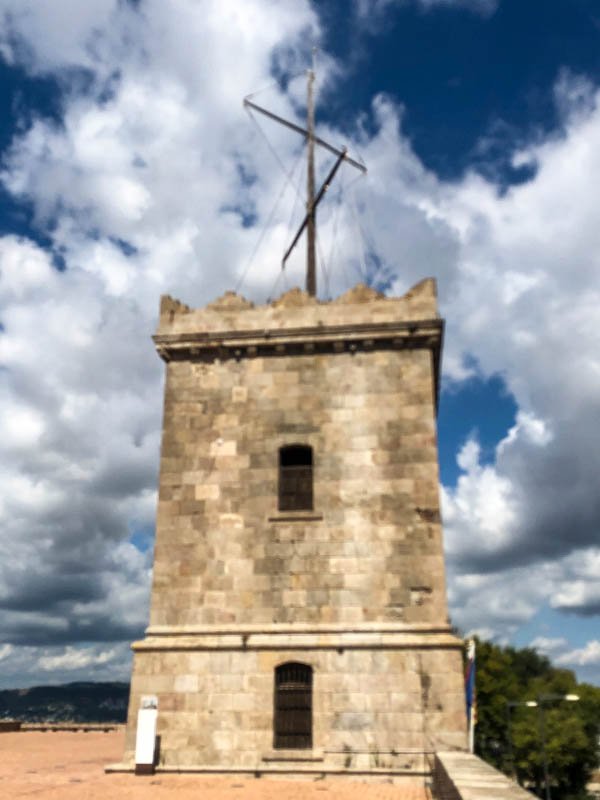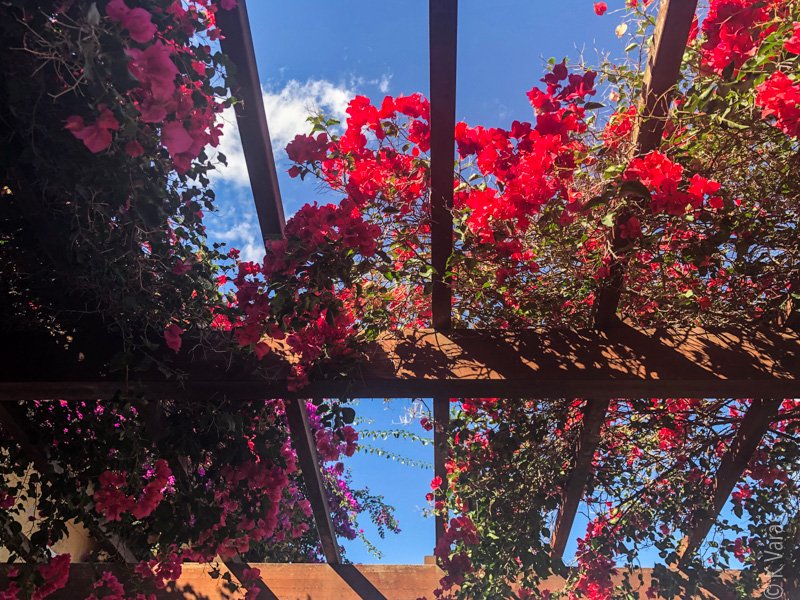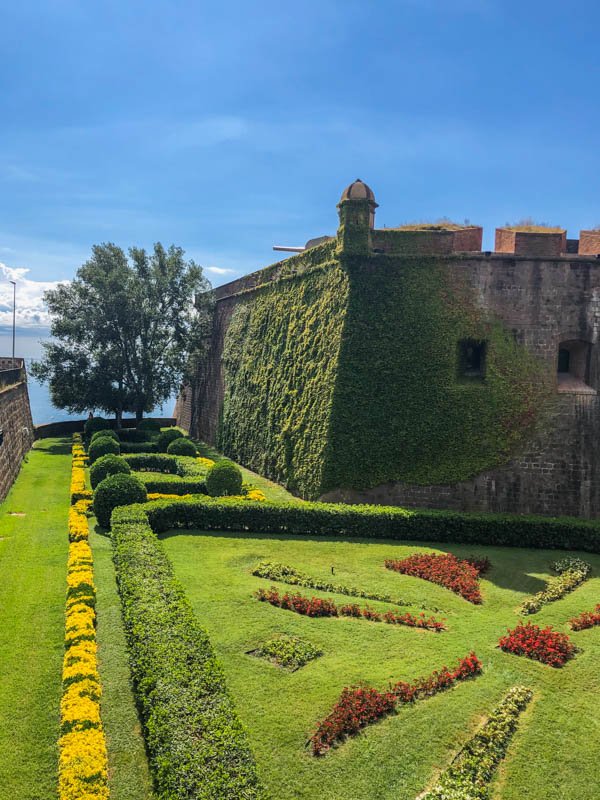
Castell de Montjuïc
There is no time to waste! After a lazy, get-my-bearings kind of day, I decided to start discovering new parts of Barcelona. In my two previous visits here, I had covered the major attractions: La Sagrada Familia, Park Güell, Barri Gòtic, etc. Now was the time to visit some places I had previously missed. High on that list was Castell de Montjuïc, atop the beautiful Montjuïc hill, also home to the Olympic Stadium, various gardens, and the Telefèric de Montjuïc (Montjuïc cable car). Back in 2011 we did get to the general area on our tour bus, but really just to the main outlook to get a fantastic view of the whole city and port. I remember thinking then that I really, really loved this city. Looking at it from the telefèric now sure made my heart skip a beat again.

The ride up in the Telefèric was cool, even if a little spooky: being alone in of those cable cars and hearing kids’ voices coming from all around but not seeing any was a tad disconcerting. I later realized the route took me over a kids’ park but the noise-makers were hidden from view. It was also a little strange to see very few people not only in the cars but also around the park. I am becoming accustomed to few fellow sightseers, however, and I am definitely enjoying the lack of crowds and queues. As advertised, the views, all the way up, are fantastic. You can see La Sagrada Familia, the port, Torre Agbar (or Torre Glòries as it is now called), Camp Nou, you name it.

The Castell de Montjuïc itself looks formidable. Located some 173m above sea level and overlooking the port of Barcelona, the fortress has been standing guard over the city for almost 400 years, and has been a symbol of both repression and the city’s struggles over the years. I found the sentiment below quite disturbing … but the fierce Catalan fortitude and identity goes on undiminished. Just the fact that pretty much every sign on the streets and in municipal and commercial establishments is primarily in Catalan and not Spanish (Castellano) tells you all you need to know about the strength of the identity in evidence here.
